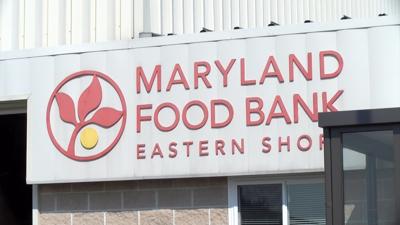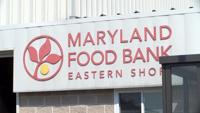SALISBURY, Md.- More people on Maryland's Eastern Shore are turning to the Maryland Food Bank for help. But as demand rises, donations are dwindling and the food bank says there are some hurdles it has to overcome as it works to meet the need.
"With COVID the past two months, we've really been trying to stay ahead of the curve to ensure that everybody still has just as much access to food as we possibly can provide," Jennifer Small, director of regional programs at the Maryland Food Bank Eastern Shore, says.
Small says 90% of the food bank's partners are still open and working to provide meals for families on the shore. Those partners are reporting an increase in new clients.
"We have relationships with around 200 across the eight counties we service here on the shore. Those that have reported have seen an increase in about 40% new clients over what they were seeing before COVID started," Small says. "It's insurmountable. It's something obviously with COVID we weren't prepared for, something very unprecedented, so just trying to figure out how to best meet that need."
Small adds that while the demand grows, donations are down. According to Small, they're buying 90% of the food they're distributing right now. Last year, only 25% of what they were giving out was purchased. Part of that, Small says, stems from issues in the supply chain.
"We're actively ordering food by the truck load and the Maryland Food bank is equipped. We're a distribution organization. We're equipped to handle this and we're dedicated to meeting 100% of that need," Small says. "But now we're seeing anywhere from four to eight week delay times in the time from order to the time it actually hits the dock and anybody going into the grocery stores can kind of see how that has impacted our retailers. Because of that, all that excess product that usually came in from the grocery stores is not accessible anymore." The Maryland Food Bank is also seeing higher prices and reporting its paying for some food at 20-30% higher prices than they were just a month ago. Small says they remain committed to making sure Maryland families are fed, working with their organizations to continue hosting safe food drives and finding creative ways around shortages. "We're looking at this as an opportunity instead of the negative because of the fact that, well we can change. If we can't get a 15 ounce, we're going to get a 32 ounce of something and see how that can move, knowing that that is also going to help take care of a family a little bit longer," Small adds. The food bank is encouraging anyone who can to help. People can contribute financially, organize a virtual food drive, or sign up to volunteer safely. Small encourages people to give them a call first to see what the needs are. Visit the
Maryland Food Bank's website herefor more details on ways you can help, or for more information on food distribution locations. "I think at this point we would be elated to have any community support that we can get. It's a big job. We're here. The community has been amazing," Small says. "Nobody should ever have to be worried about where their next meal is coming from. We're here for the long haul cause we know there's going to be lasting effects of this in the months to come."


